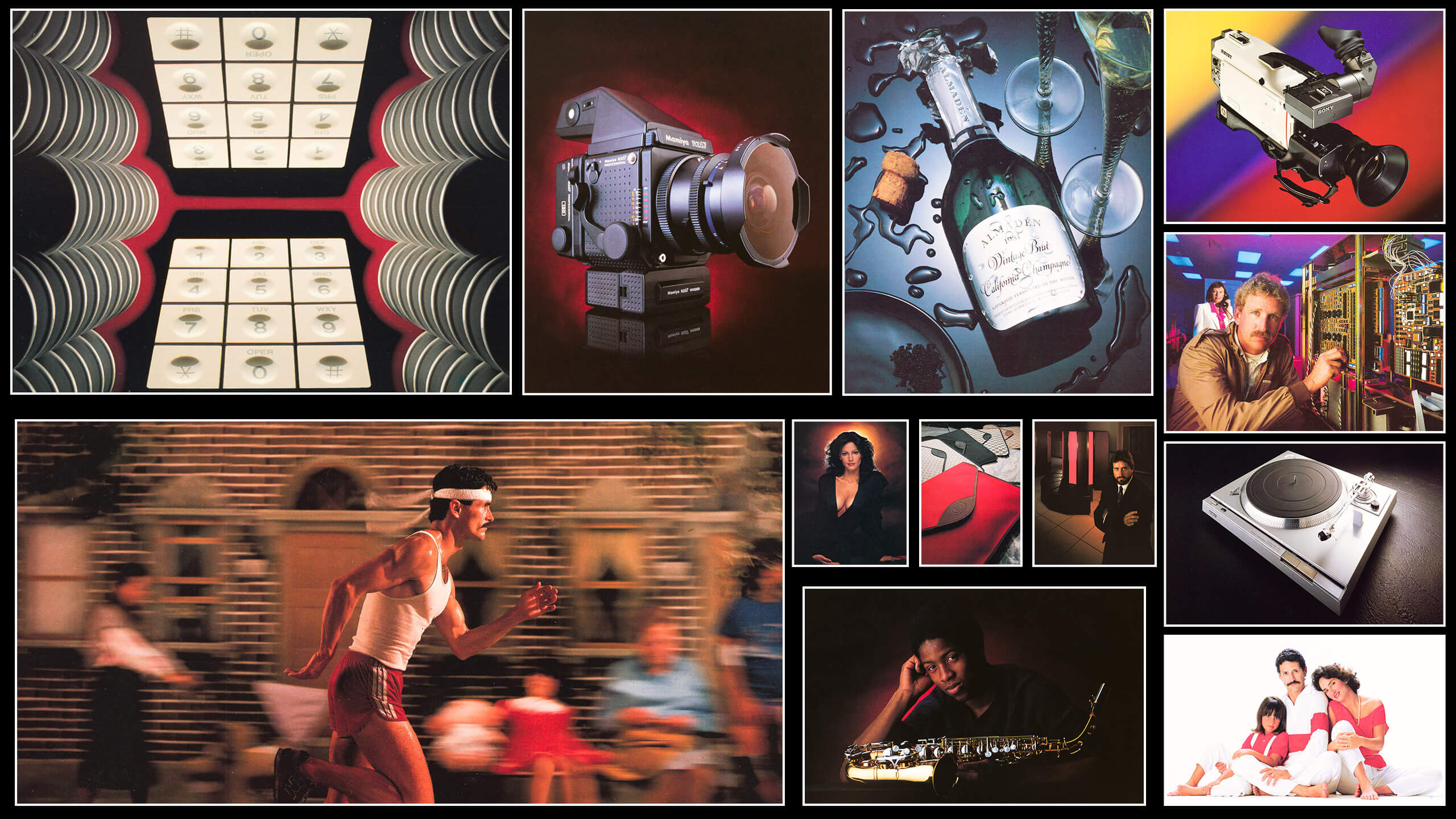“Rules aren’t any good if they don’t work! The only real rules are the laws of physics and optics.” -Dean Collins
Dean Collins was a master of lighting — both using it to make stunning photographs and teaching how light works. Dean did not provide recipes for lighting setups. He explained light itself. He taught what light was and why it worked the way it does.
Lighting seminars
In the early 1980s, Bell & Howell Mamiya Company sponsored Dean Collins lighting seminars across the U.S. to promote the Mamiya line of professional medium format cameras. I worked for the company as a technical representative. One of my jobs was helping Dean with his presentations. As such, I had the honor of seeing him explain how light worked at least 20 times. He would show a photo and then go behind the scenes with his multi-media slide projectors to show the setups. I sat with the others in the every seminar and soaked up the inner workings of light.
More than the setup

Seeing the lights setup was great. Better yet, Dean Collins explained what was happening and why it worked that way. He realized that light and how it worked was a constant. Light always worked the same way. Lenses and cameras recorded light in repeatable ways. The key was understanding light. Dean was its master and a masterful teacher of it. He understood that photography was all about light and not the camera.
Commercial photographer
Dean Collins had a studio on G Street in San Diego where he worked for clients. He photographed everything from cars, hotels, fashion, beauty, and corporate locations. All of his photographs told the stories his clients wanted to get across to their customers.
I visited his studio and watched him shoot a fashion set. He created the lighting he wanted on the model, metered the light and then shot a Polaroid test. The Polaroid confirmed what he already knew — he had the look he wanted. He put a film back on the camera and worked with the model through a dozen poses and expressions. He changed film backs and shot twelve more photographs on color slide film. After the second roll, he politely said “Thanks, Got it!” to the model. The shooting portion took maybe five minutes.
No bracketing
Dean Collins did not bracket his exposures during the session with the model. He concentrated on the look the model was giving him. He knew that all of the technical aspects of the shoot were locked down. All that mattered was his subject. When he showed me the processed film it was no surprise that every exposure was perfect. All that remained was to choose the hero shot.
Finelight
Dean Collins lived for light, capturing it on film and teaching other photographers how to do what he did. He worked when all photographs were made on film.
His Finelight publications showcased his work on their covers and inside the pages showed Polaroid tests, and detailed explanations complete with easy-to-understand lighting diagrams. His work spanned all areas of photography. He did products, food, editorial, special effects and portraits in his studio and on location.
The opening photo features images by Dean Collins from my personal collection of Finelight portfolios.
Wicked sense of humor
Dean Collins taught crowds of eager photographers who wanted to understand the mysteries of how light worked. His talks were peppered with jokes. One of my favorites is when he described what photographers do.
He said, paraphrasing now, “Photographers take objects that exist in four dimensions — height, width, depth and time and then translate them into two dimensions, height and width for one-dimensional art directors.” Photographers loved this.
Skip Cohen, president of Platypod and head of Skip Cohen University talked about attending Dean Collins’ seminars. “I’ve attended hundreds of workshops and nobody compares to Dean’s style and comfort level when it came to being up in front of a crowd,’ Cohen wrote. “He was quick on his return volleys too. Once being asked, “Dean, it’s no wonder all your images are stunning; look at how beautiful all your models are. Don’t you ever photograph any ugly people?” There wasn’t one second of hesitation as he responded, “Of course I do and why don’t you get your family and come up here right now and we’ll do a portrait!”
“Beauty is in the eye of the checkbook holder” Dean Collins once said. I’m pretty sure he also was the first to note that clients are their own worst enemy.
Dean Collins on interiors
He was in high demand for his ability to make hotel rooms inviting and worth visiting. He described photographing interiors this way, “Lighting a room is 5% technique and 95% moving furniture.”
This video is courtesy of Photoshop Cafe. It shows a segment from the DVD set “Dean Collins on Lighting — Live at Brooks Institute of Photography” that shows him sharing how to light hotel rooms. The video was made in 1991 well before HD video and high dynamic range cameras. While the quality is poor by today’s standards the information is priceless.
Sit back for seven and a half minutes and meet the Dean Collins that I was fortunate to see so many times live and to work with him at the dawn of digital photography. Like so many that knew and loved Dean, I still have his cell phone number in my contacts. He was and is my friend. I think of him often, especially when lighting a scene.
Sources: Skip Cohen University, Photoshop Cafe, San Diego Union-Tribune.
Read more stories and see more photographs by inspirational photographers in On Photography.
Source link




Leave a Reply